Buyer's Guide
Don’t Miss These 5 Landmark Works of Canadian Postwar Art Hitting the Auction Block This Month
The sale is up online at BYDealers through May 30.

The sale is up online at BYDealers through May 30.

Artnet Gallery Network

Canadian art history has a unique heritage shaped by thousands of years of artistic creation, early on by the First Nations Peoples, through the development of the Group of Seven—the landscape painters in the 1920s and ‘30s who pioneered a distinctly Canadian Modernism—and later through the embrace of international art movements in the 1960s.
Founded in 2017, Montreal auction house BYDealers wants to share this artistic heritage with a global audience. Having established unique partnerships with significant art dealers throughout the country, BYDealers has centered itself within a singular nexus of expertise—bringing with it a number of sought-after artworks by Canada’s most famous artists.
Many of those works are now being offered in BYDealers’s “Historical and Post-War Canadian Art Online Auction” (May 8–30). The sale’s 68 lots span from the nation’s early Modern art movements up to creations of the recent past—with a particular emphasis on works from the 1960s and ’70s.
Below, we picked out five that you won’t want to miss.
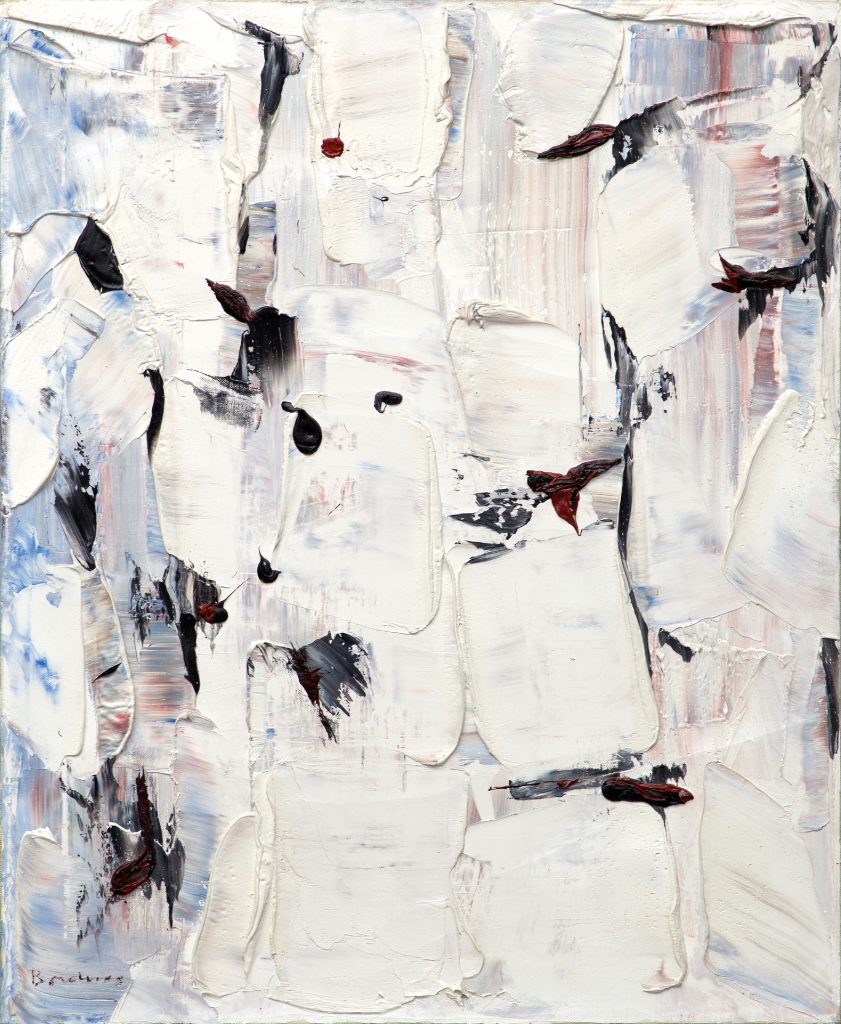
Paul-Émile Borduas, Modulation Aux Points Noirs (1955). Courtesy of BYDealers.
In September 1955, Québecois artist Paul-Émile Borduas set out from New York for Paris with his daughter Janine. This transatlantic journey inspired the artist’s “simplifying leap,” an idea that would permeate his abstract painting throughout 1956, one of the most prized periods of his career. Modulation Aux Points Noirs (1955) comes from the very first paintings the artist made after arriving in Paris. Here, thick spatula smacks of white impasto are smeared in places to reveal hints of color, while dashes of black—which is emblematic of the series—energetically intersperse the cool-toned surface.
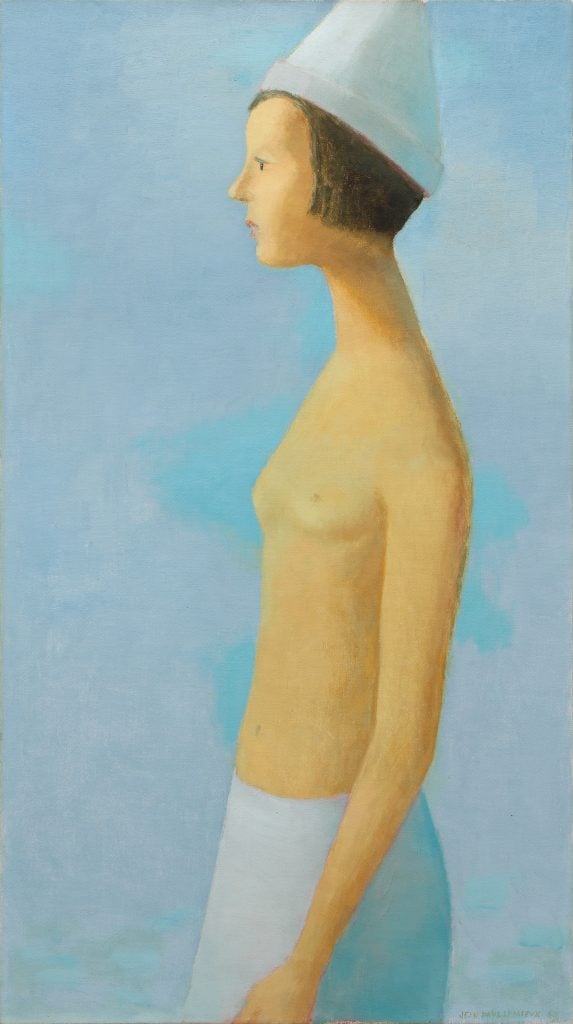
Jean Paul Lemieux, Nu Sur Fond Bleu (1963). Courtesy of BYDealers.
Jean Paul Lemieux is regarded as one of the most important Canadian artists of the 20th century, known for his almost folkloric figures set against the backdrop of Canada’s vast landscapes. Nu Sur Fond Bleu (1963) possesses a quiet majesty characteristic of the artist’s best works: the profile figure of a young woman dissolves against a serene blue background with the ethereal impermanence of a dream.
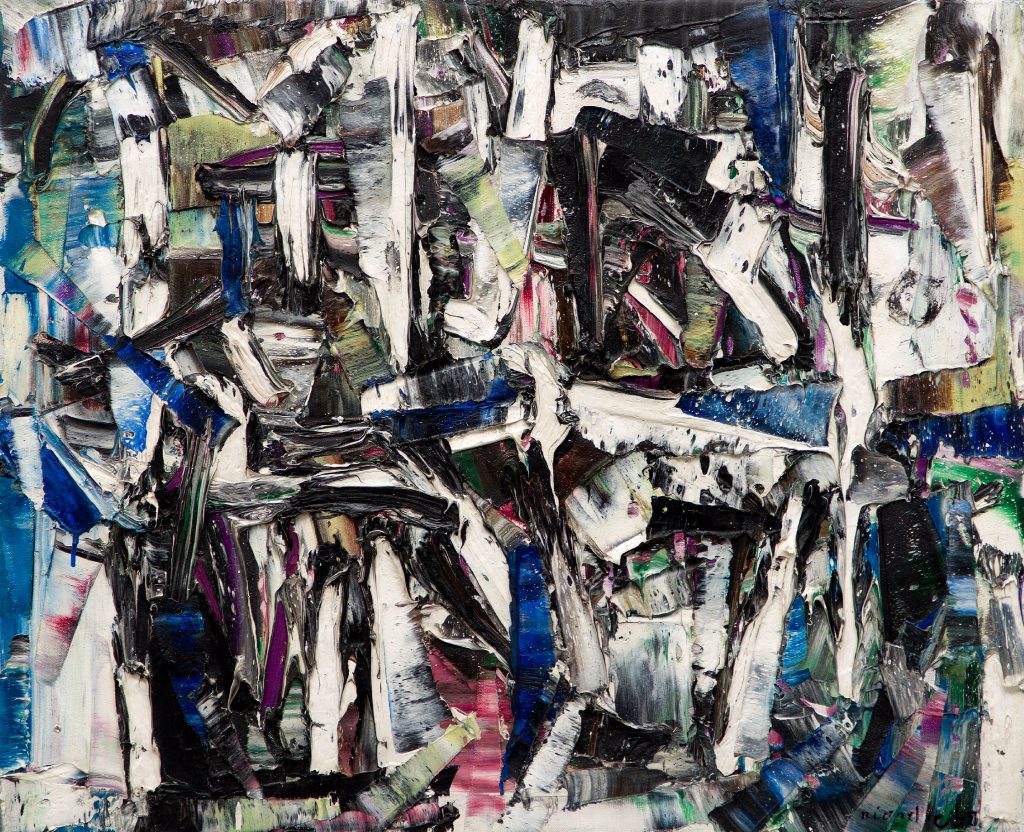
Jean Paul Riopelle, Untitled (1958). Courtesy of BYDealers.
Jean Paul Riopelle had an impassioned and almost sculptural approach to paintings—filled with ravines and peaks of paint—that capture the rigor and decisiveness of his technique. This untitled work from 1958 is a prime example. Marked by rigorous smears of colors, Untitled (1958) captures the creative turn Riopelle took in the second half of the 1950s as his mosaic works of 1953 and 1954 gave way to a fierce gesturality.
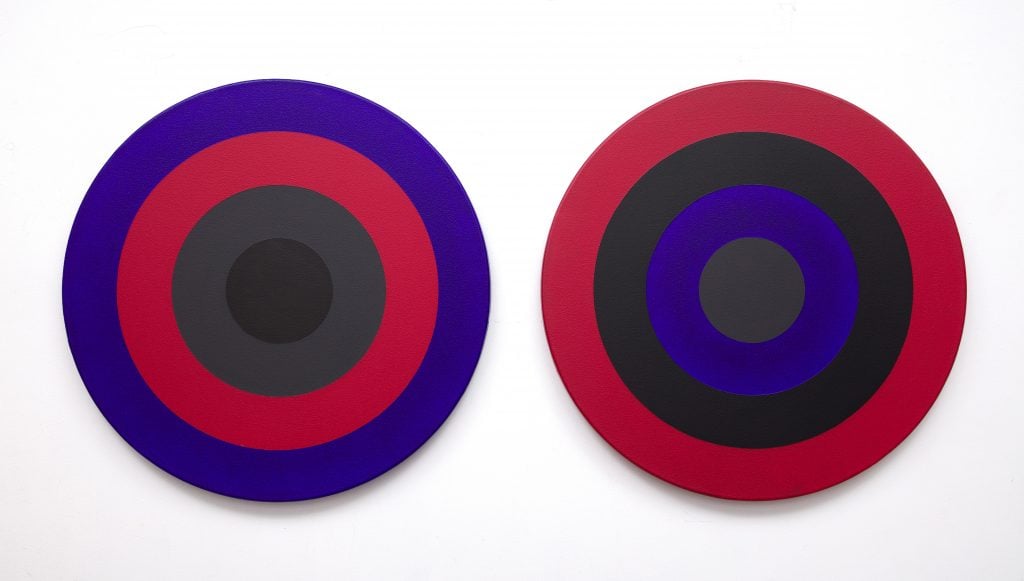
Claude Tousignant, Double 30 (Azo-Cobalt) (1975). Courtesy of BYDealers.
With Double 30 (Azo-cobalt) (1975), Montreal artist Claude Tousignant created one of the defining motifs of his career: the circular diptych. This seminal work belongs to a series of tondos and shaped canvases that first earned Tousignant international acclaim. Here, four concentric circles form a reverberating optical illusion, in which, as Tousignant put it, “the confrontation of these pairs of colors—which by their juxtaposition produced, so to speak, a third color.”
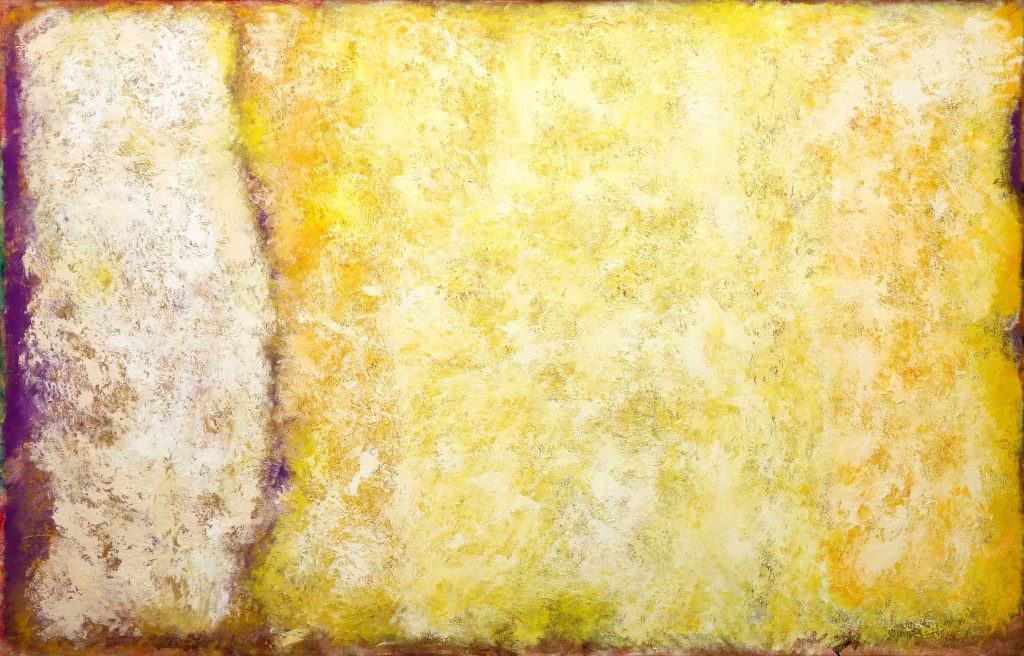
Jean Albert McEwen, Midi, Temps Jaune (1960). Courtesy of BYDealers Auction House.
Here, oranges, saffrons, and lemon yellows are layered in gauzy, semi-transparent layers that hint at the drowsy summer light and fragrant blossoms of June, while hints of purple emerge here and there. This painting captures the best of McEwen’s colorist approach to the canvas and marks a special year in the artist’s career. The sister painting to Midi, Temps Jaune—Les Amours Jaunes (1960)—was the opening work in McEwen’s Montreal Museum of Fine Arts retrospective in 1988.